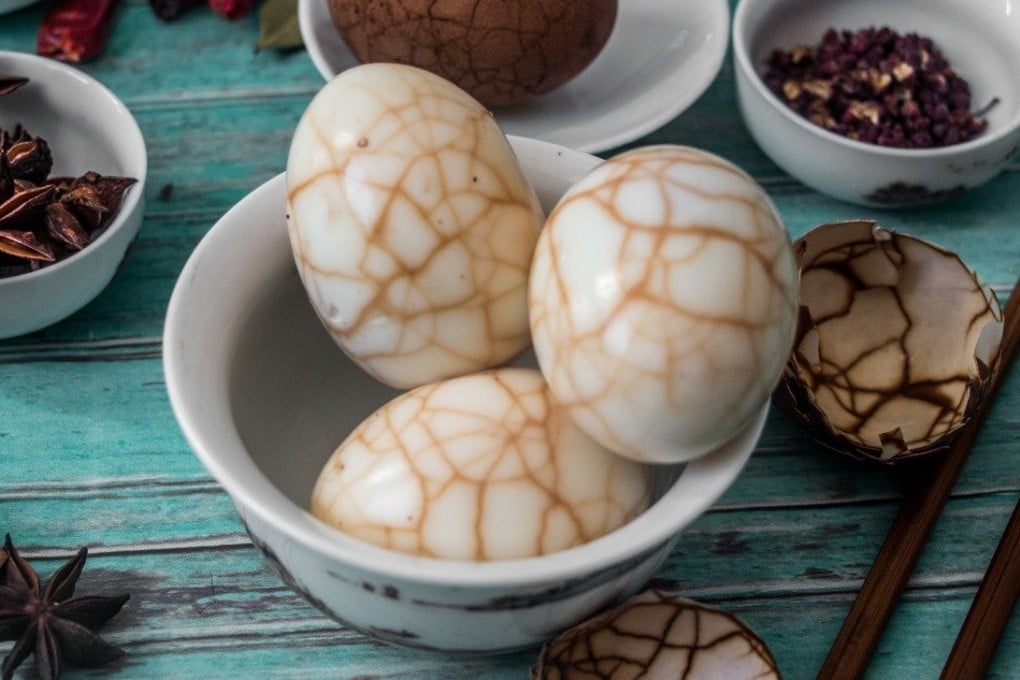How Chinese tea eggs get their unique colour and taste
- Tea eggs are a popular snack across mainland China, Taiwan and Southeast Asia, characterised by dark-brown lines that cross the egg white
- Making them is a time-consuming process that can take anywhere from a few hours to a whole day

Walk through night markets in China and Southeast Asia, and you’ll smell the unmistakable fragrance of tea eggs. They’re usually sold on the street, scooped up straight from vats of simmering broth.
Also known as marbled eggs, tea eggs are characterised by dark-brown lines that cross the albumen like a cobweb – an effect caused by cracks in the egg shell.
The eggs are often eaten on their own as a quick snack and enjoyed for their savoury, soy sauce flavour, with hints of tea. In China, they’re a fixture at convenience stores and street stalls.
Making them is a time-consuming process.
A tea egg is made by cracking a hard-boiled egg and slow-cooking it in a broth made with soy sauce, tea leaves and various spices, usually star anise, cinnamon and Sichuan peppercorns.
This process can take anywhere from a few hours to a whole day. The longer the eggs sit in the broth, the more the flavour seeps into the cracks and marinates the eggs.
The size of the egg also matters. Tea Chapter, a store in Singapore famous for its tea eggs, advises using medium-sized eggs.